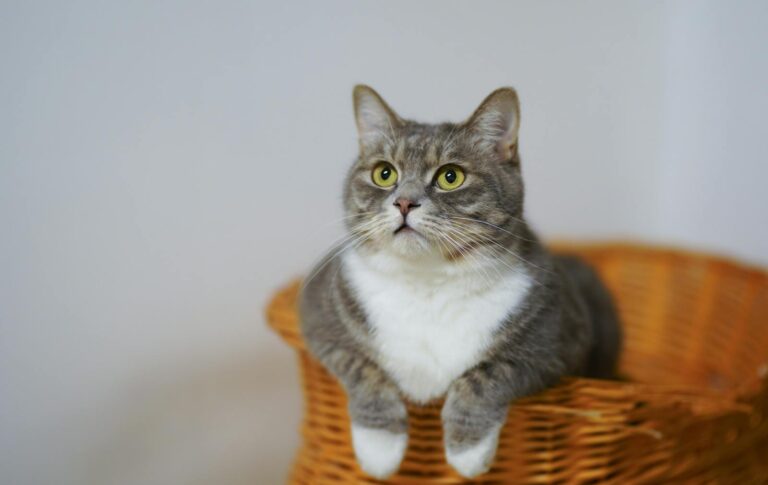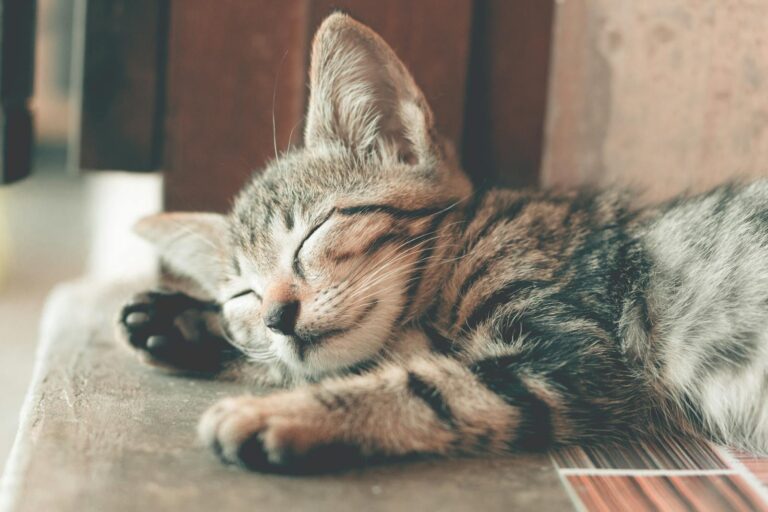Homemade Cat Food Guide – Is It Safe and Worth the Effort?
In recent years, there has been a surge in interest regarding the benefits and drawbacks of feeding cats homemade meals. This Homemade Cat Food Guide: Is It Safe and Worth the Effort? aims to explore the various aspects of creating cat food at home while addressing safety concerns and nutritional adequacy.
Introduction: The Growing Interest in Homemade Cat Food
The pet food industry is rapidly evolving, with a significant shift towards natural and homemade options. As more pet owners seek healthier alternatives for their feline companions, the idea of making cat food at home becomes increasingly appealing. But is homemade cat food truly beneficial, or does it carry inherent risks?
This article will delve into the growing trend of homemade cat food, examining its potential advantages and disadvantages. We’ll also take a closer look at feline dietary needs and provide practical recipes and guidelines to help you make informed decisions about your cat’s diet.
The Trend of Homemade Pet Food
Many pet owners are becoming disillusioned with commercial pet food products due to concerns about quality, ingredients, and the lack of transparency from manufacturers. Homemade pet food is often perceived as a way to ensure better nutrition and overall health for pets.
But what drives this trend? Factors like increased awareness of food sourcing, rising cases of pet allergies linked to commercial diets, and the desire for greater control over what goes into our pets’ bowls all play a part.
The Role of Social Media
Social media platforms have amplified the conversation surrounding homemade pet food, with countless blogs, videos, and forums dedicated to sharing recipes and experiences. This online community fosters a sense of belonging among pet owners who want the best for their furry friends. However, not all information shared online is accurate or safe.
Celebrity Influence
Moreover, celebrity endorsements of homemade pet food have further cemented its appeal in popular culture. Influencers and public figures sharing their homemade recipes create an allure around the concept. This can lead some pet owners to feel pressured to prepare homemade meals, even if they may not fully understand the nutritional requirements involved.
Understanding Feline Nutritional Needs: A Balanced Diet is Crucial
Before diving into the world of homemade cat food, it’s essential to grasp what constitutes a balanced feline diet. Unlike dogs, cats are obligate carnivores, meaning they require specific nutrients found mainly in animal tissues.
Essential Nutrients for Cats
To create a suitable homemade meal for your cat, it’s crucial to understand the essential nutrients required for their well-being:
- Proteins: Cats need high-quality proteins derived from animal sources. Proteins aid in muscle development, growth, and immune function.
- Fats: Fats are vital for energy supply and support healthy skin and coat. They also help absorb fat-soluble vitamins.
- Vitamins and Minerals: Cats require vitamins like A, D, E, and B-complex, along with minerals such as calcium, phosphorus, and potassium. These nutrients play critical roles in bodily functions, including metabolism, bone health, and nerve function.
Water: An Often-Overlooked Component
While we often focus on solid foods, one vital aspect of a cat’s diet is water intake. Cats are notorious for being reluctant drinkers, which can lead to dehydration and urinary tract issues. Homemade diets can offer an opportunity to incorporate moisture-rich ingredients or wet foods, ensuring that hydration remains a priority.
The Importance of Balance
Creating a balanced meal is not simply about throwing together various ingredients. It’s crucial to ensure that your homemade food meets your cat’s nutritional needs in a comprehensive manner. Imbalances can lead to deficiencies or excesses, posing serious health risks.
Potential Benefits of Homemade Cat Food: Fresh Ingredients and Dietary Control
Despite the challenges associated with homemade cat food, many pet owners find it an appealing option due to the potential advantages it offers.
Fresh Ingredients and Quality Control
One of the most significant benefits of preparing homemade cat food is the ability to select fresh, high-quality ingredients. Pet owners can choose organic produce, free-range meats, and even sustainably sourced seafood, ensuring that their cats receive the best possible nutrition.
Additionally, by making food at home, owners can avoid preservatives, fillers, and artificial additives often found in commercial pet food.
Customization for Specific Needs
Homemade cat food allows for customization based on individual cat requirements, such as allergies or sensitivities. For instance, if a cat has a known allergy to certain proteins, pet owners can easily adjust recipes to eliminate those triggers.
Furthermore, older cats or those with health conditions might benefit from tailored meals designed to address their unique needs, whether that’s softer textures, lower protein content, or added supplements.
Transparency and Informed Choices
By making food at home, pet owners gain transparency regarding every ingredient that goes into their cat’s meals. This empowers them to make informed choices rather than relying on commercial labels that can be misleading.
Risks of Homemade Cat Food: Nutritional Deficiencies and Safety Concerns
While the benefits of homemade cat food are appealing, several risks must be taken into account. Understanding these risks is crucial for any pet owner considering this path.
Nutritional Deficiencies
One of the most significant concerns regarding homemade cat diets is the potential for nutritional deficiencies. Even well-intentioned recipes can fall short of meeting a cat’s complex dietary requirements.
For example, simple meat-based diets may lack essential vitamins and minerals needed by felines. Furthermore, without proper knowledge or guidance, pet owners may inadvertently create imbalanced meals.
Risks of Pathogen Contamination
Another concern is food safety. Homemade cat food, especially when using raw ingredients, carries an inherent risk of contamination by pathogens such as Salmonella or E. coli. These bacteria can pose a threat not only to pets but also to humans handling the food.
To mitigate these risks, strict hygiene practices should be followed, including thorough washing of hands and surfaces, proper storage of ingredients, and cooking meats to safe temperatures.
Legal and Ethical Considerations
In some regions, providing homemade pet food may raise legal or ethical questions. Veterinarians may caution against homemade diets, especially if they believe clients lack the necessary knowledge to maintain balanced nutrition. This can lead to friction between pet owners and professionals.
Nevertheless, research indicates that some veterinarians are now more open to discussing homemade options and working with pet owners to develop safe, balanced recipes.
Homemade Cat Food Recipes and Guidelines: Ensuring Safety and Balance
With the understanding of both the benefits and risks, let’s explore some basic guidelines for creating balanced homemade cat food, as well as a few easy-to-follow recipes.
General Guidelines for Homemade Cat Food
- Consult Your Veterinarian: Before transitioning your cat to a homemade diet, consult your veterinarian or a pet nutritionist to discuss your cat’s specific needs.
- Research and Educate Yourself: Familiarize yourself with feline nutritional requirements so you can formulate balanced meals. Resources include books, reputable websites, and courses on pet nutrition.
- Use a Variety of Ingredients: A single recipe may not meet all your cat’s nutrient needs, so rotate ingredients frequently to ensure diversity in their diet.
- Consider Supplements: Some homemade diets may require additional supplements to achieve balance, particularly for essential vitamins and minerals.
- Monitor Your Cat’s Health: Keep an eye on your cat’s weight, coat condition, and overall health. If you notice any changes, consult your vet promptly.
Sample Recipe Ideas
Chicken and Vegetable Medley
Ingredients:
- 1 cup cooked chicken (shredded)
- ½ cup carrots (finely chopped)
- ½ cup peas
- 1 tablespoon fish oil (for omega-3 fatty acids)
- ½ cup water or low-sodium chicken broth
Instructions:
- Cook the chicken thoroughly and shred it into small pieces.
- Steam the carrots and peas until tender.
- Combine the chicken, vegetables, and fish oil in a bowl, adding water or broth to reach desired consistency.
- Allow cooling before serving to your cat.
Nutritional Note: This recipe is rich in protein and healthy fats but may require a supplement for taurine and other essential nutrients.
Fishy Feast
Ingredients:
- 1 cup canned tuna (in water, drained)
- ½ cup cooked rice
- ¼ cup green beans (chopped)
- 1 egg (boiled and mashed)
Instructions:
- Mix the drained tuna with cooked rice and green beans.
- Add the boiled egg and mix until well combined.
- Serve fresh and store leftovers in the refrigerator for up to three days.
Nutritional Note: Tuna is a good source of protein and omega-3 fats; however, limit its frequency to prevent mercury accumulation.
Monitoring and Adjusting Recipes
As you begin creating homemade cat food, keep track of your cat’s response to different recipes. Look for signs of food allergies or intolerances, such as digestive upset or skin irritations. Adjust the recipes accordingly to suit your cat’s preferences.
Is Homemade Cat Food Worth the Effort? Weighing the Pros and Cons
With all factors considered, is the effort of making homemade cat food worth it? Let’s weigh the pros and cons.
The Case for Homemade Cat Food
- Enhanced Nutrition: Cats consuming homemade meals may experience improved health due to fresher ingredients and tailored nutrition.
- Stronger Bond: Preparing food for your pet can enhance the human-animal bond, as pet owners invest time and thought into their cat’s meals.
- Control Over Ingredients: Owners can eliminate harmful additives and manage dietary restrictions effectively.
The Challenges Ahead
- Time-Consuming: Preparing homemade meals can be labor-intensive and requires planning and consideration.
- Nutritional Expertise Required: Crafting balanced meals necessitates understanding feline nutrition, which can be overwhelming for some pet owners.
- Risk of Errors: Mistakes in meal preparation can lead to serious health consequences, leaving pet owners feeling anxious about potential mistakes.
Making the Decision
Ultimately, the decision to transition to homemade cat food hinges on each pet owner’s circumstances, including their lifestyle, willingness to commit time, and ability to access and afford quality ingredients.
When done correctly, homemade cat food can provide numerous benefits for both cats and their owners, but it’s essential to do so responsibly and with adequate knowledge.
Conclusion
Navigating the world of homemade cat food requires a thoughtful approach that balances the benefits against the risks. By understanding feline nutritional needs, adhering to safety guidelines, and consulting with veterinary professionals, cat owners can create nutritious meals that support their pet’s health and well-being. Ultimately, the choice to prepare homemade cat food should stem from a commitment to providing the very best care for your feline friend.







